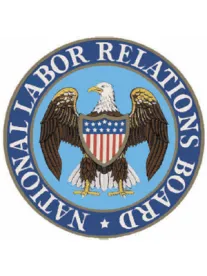Employers, especially in the context of workforce reductions, may provide departing employees with severance agreements in exchange for a release. Those agreements often include non-disparagement clauses and confidentiality clauses regarding the terms and the amount of the agreement.
On February 21, 2023, in McLaren Macomb, the National Labor Relations Board (NLRB) held that such clauses infringe on employees’ rights under the National Labor Relations Act (NLRA). Importantly, McLaren applies to both unionized and non-unionized workplaces alike.
IN DEPTH
McLaren limits use of confidentiality and non-disparagement provisions within employee-employer agreements. Under McLaren, employers can violate Section 8(a)(1) of the NLRA by merely offering unlawful terms, regardless of whether the employee ever signs such an agreement and regardless of whether the employer actually seeks to enforce such clauses.
FACTS OF McLAREN MACOMB
McLaren Macomb operates a teaching hospital in Michigan. There was a reduction in force with the hospital eliminating its outpatient services, resulting in the furlough of 11 union-represented employees. McLaren provided a severance agreement that included a release, as well as standard clauses prohibiting either disparaging McLaren (a non-disparagement clause) or disclosing the terms of the agreement itself (a confidentiality clause).
Looking at each, the clauses were facially neutral on any NLRA rights:
Confidentiality: “The Employee acknowledges that the terms of this Agreement are confidential and agrees not to disclose them to any third person, other than spouse, or as necessary to professional advisors for the purposes of obtaining legal counsel or tax advice, or unless legally compelled to do so by a court or administrative agency of competent jurisdiction.”
Non-Disclosure: “At all times hereafter, the Employee promises and agrees not to disclose information, knowledge or materials of a confidential, privileged, or proprietary nature of which the Employee has or had knowledge of, or involvement with, by reason of the Employee’s employment. At all times hereafter, the Employee agrees not to make statements to Employer’s employees or to the general public which could disparage or harm the image of Employer, its parent and affiliated entities and their officers, directors, employees, agents and representatives.”
THE LEGAL BASIS OF McLAREN MACOMB
This NLRB decision takes an expansive view of employee rights under Section 7 of the NLRA. This is one of a series of cases in which the NLRB has used its test of “whether a reasonable employee would find that the proffer of the settlement agreement would interfere with, restrain, or coerce them in the exercise of their Section 7 rights.”
That test permits regulation by the fiat of an NLRB majority. This is an issue on which the NLRB has swung back and forth from presidential administration to presidential administration. NLRB members are appointed by the President, so the current NLRB (and this decision) reflect a policy pronouncement reversing prior precedent. The NLRB has a history of showing little deference to stare decisis (adherence to prior decisions).
Here, there is certainly a basis for connecting such clauses to Section 7 rights under the NLRA, as the NLRB majority in McLaren Macomb explained:
A severance agreement is unlawful if it precludes an employee from assisting coworkers with workplace issues concerning their employer, and from communicating with others, including a union, and the Board, about his employment. Conditioning the benefits under a severance agreement on the forfeiture of statutory rights plainly has a reasonable tendency to interfere with, restrain, or coerce the exercise of those rights unless it is narrowly tailored to respect the range of those rights.
The flaw in McLaren Macomb is the failure to fairly balance those considerations versus employer interests. (Textile Workers Union of Am. v. Darlington Mfg. Co., 380 U.S. 263, 269 (1965) (“[I]t is only when the interference with [Section] 7 rights outweighs the business justification for the employer’s action that [Section] 8(a)(1) is violated.”).)
That flaw will be central to appellate review of this decision.
THE FATE OF NON-DISPARAGEMENT PROVISIONS POST-McLAREN
Here, the NLRB found the non-disparagement provision to be unlawful because it:
-
Prohibited the employee from making a statement that the employer had violated the NLRA to their former coworkers, their union, the NLRB and others
-
Was not limited to matters regarding past employment with the hospital
-
Was not limited in time
-
Failed to cabin its definition for “disparagement” to the narrow circumstances set out in NLRB v. Electrical Workers Local 1229 (Jefferson Standard Broadcasting Co.), 346 U.S. 464, 477 (1953).
Whether the NLRB will permit any non-disparagement clauses remains to be seen. What is clear from the criticisms of McLaren Macomb’s vanilla version of non-disparagement is that any such clause that this NLRB will permit will be too limited to have value for most employers.
THE FATE OF CONFIDENTIALITY PROVISIONS POST-McLAREN
This confidentiality provision, like many others, prohibited the employee from disclosing the terms of the severance agreement “to any third person.” The NLRB took issue with the fact that the clause might be read to prohibit employees from discussing the terms of the severance agreement with their union or their coworkers.
The NLRB also objected that the clause might be read to forbid an employee from going to the NLRB to file an unfair labor practice charge over either the layoff or the severance agreement. What the NLRB did not say, however, was that a carve-out for going to the NLRB would make this clause permissible. The NLRB, unfortunately, has never been a fan of providing safe harbors or bright lines. Realistically, broad confidentiality regarding the fact and amount of settlement will be effectively unattainable in most situations (pending appellate review of this decision).
THE SILVER LINING: THE NLRA’S LIMITED DEFINITION OF EMPLOYEE
Agreements with managers or supervisors are unaffected by McLaren Macomb.
Supervisors are explicitly excluded from the definition of employee under the NLRA. (29 U.S.C. §152(3).) Managers are likewise excluded as a matter of legislative intent and policy by virtue of Supreme Court decisions. (NLRB v. Bell Aerospace Co., 416 U.S. 267, 267 (1974) (“[T]he purpose and legislative history of the [Act], the Board’s subsequent and consistent construction of the Act …, and the decisions of the courts of appeals all point unmistakably to the conclusion that ‘managerial employees’ are not covered by the Act.”).)
WHAT’S NEXT?
Employers should consider eliminating both non-disparagement clauses and clauses seeking broad confidentiality on the terms and amounts of the release payments with rank-and-file employees. Those clauses are seldom enforced and now create a downside risk of their own, including NLRB litigation and uncertainty as to enforceability.
Employers who continue with such clauses should draft narrowly and add two safety valves: First, a severability clause is now essential so that the intended release is not lost if the agreement is challenged on McLaren Macomb grounds. Second, a carve-out (equivalent to those often found in federal age claim releases) to allow employees to contact the NLRB should be added.
Lastly, many are left asking, “Can an employee who signed a release with clauses just like McLaren Macomb now turn around and sue under the Age Discrimination in Employment Act, Title VII or any other statutory or common law claim”? This will undoubtedly occur.
Nicholas Meyer also contributed to this article.






 />i
/>i

